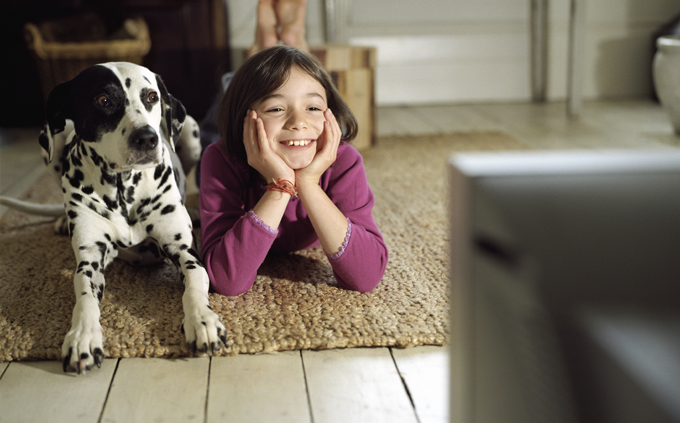Does your dog pay attention to the TV when it’s on? Does he react when there are dogs on the small screen?
A study published in the journal Animal Cognition found dogs observe images just like we do, and that they can identify images of other canines. They also spot images faster than we do, and see in a range of two primary colors — yellow and blue. Humans see the full range of color.
Dr. Nicholas Dodman, a veterinary behaviorist at Tufts University, tells National Geographic since a dog’s eyes register images at a quicker pace than we do, on an older television set, which shows fewer frames per second, your dog sees flickering images — much like a 1920s movie.
According to Dodman, dogs are a lot like us when it comes to personal taste on TV. “They orient to things they’re interested in, look at it for a couple of minutes and go ‘hmm, interesting,’ and then look away,” he says. “That’s better than spinning your wheels all day while your owners are away.”
Others “have been desensitized to television,” he adds. “When they see a dog on TV, they may think, ‘Those guys just hang out on the television. They never actually walk around.’”
Some dogs will respond to a barking dog on television, and they even have their own HDTV cable channel station, DogTV. According to Dodman, it has a much higher number of frames per second and is specifically colored to accommodate a dog’s vision.
Dodman also notes some breeds like Hounds, who are driven by smell, don’t show a lot of interest to what’s on television. Herding breeds, such as Terriers, however, are motivated by moving objects; so they usually respond by barking or by intently watching the dog on the screen.
A lot of dog parents leave the radio or TV on when we leave our homes, as a way to keep our dogs company. Dodman suggests the sound can be more comforting to our pets than quiet. He says dogs prefer shows that feature animals.
Save









